|
Michigan has some of the best wildlife viewing opportunities around. This quarterly newsletter will give you some tips on how to get involved, what to watch for, where to go, and the great wildlife conservation work going on across the state. Enjoy!
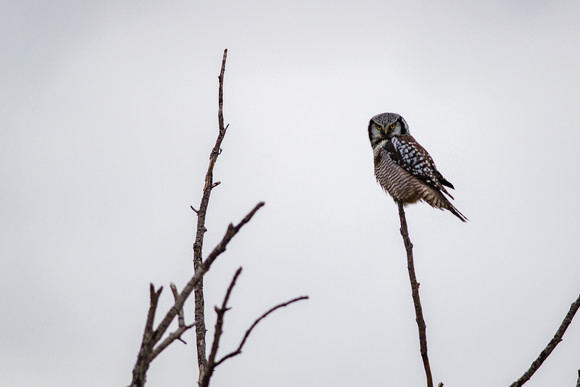 Winter in Michigan is a great time to go birding. While many of our summer species have headed for warmer places to spend the winter, for a number of species, Michigan is their warm place. Northern forest and tundra species, like this northern hawk owl (pictured) and the snowy owl, make special appearances in Michigan during the winter months. Some of our summer residents stick around in the chilly weather but change their summer finery for more muted winter colors, which makes for plenty of fun challenges in winter birding. Find birding trails and winter birding opportunities.
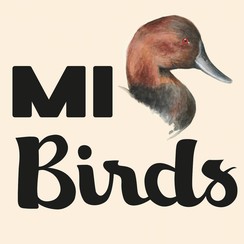
With so many people adjusting to life at home, more people are using bird watching, or birding, as a way to connect to nature. In the latest MI Birds blog post, learn more about which bird species can be seen across Michigan all winter long and how you can get involved in upcoming community science bird counts and attend upcoming webinars on bird identification. MI Birds is an outreach and engagement program founded by Audubon Great Lakes and the Michigan DNR, which aims to increase all Michiganders' engagement in the understanding, care and stewardship of public lands that are important for birds and people.
|
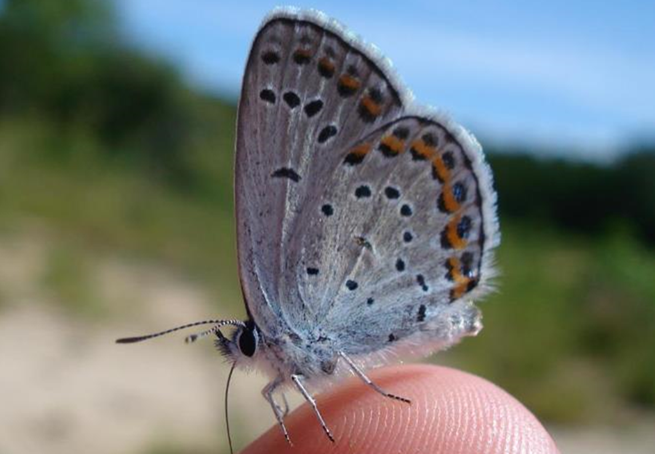 After a flurry of snow covered the Flat River State Game Area, DNR staff mowed over the snow to benefit the federally endangered Karner blue butterfly. These pale blue, dime-sized butterflies can only be found in small pockets of savanna habitat where wild lupine grows in the open sunlight. Karner blues depend on lupine for survival, as females lay their eggs on the plant and emerging caterpillars feed on the leaves.
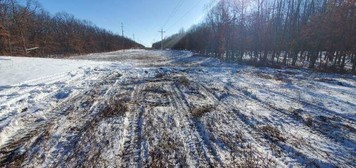
For Karner blue butterfly populations to thrive, the area must be periodically burned with fire or mowed to remove any large woody species that may cast shade on the lupine. To protect the lupine and over-wintering egg clutches, mowing can only occur when at least 4 inches of snow has accumulated. This winter habitat management activity will produce flourishing native wildflowers and fluttering insects this spring and summer.
Learn more about the Karner blue butterfly.
|
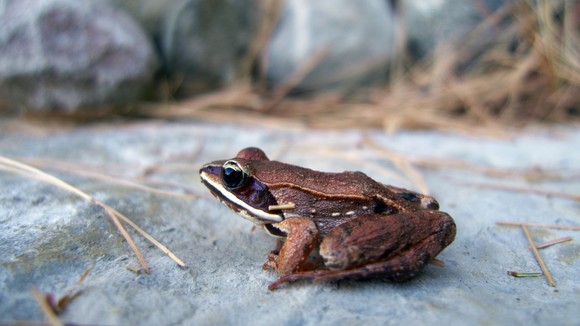 You can help track frog and toad population trends in Michigan by listening for their calls this spring. Data is collected throughout the state, and anyone who is interested is welcome to participate. Frog and toad survey data collection takes place April through July, so now is the perfect time to plan your survey route and brush up on frog and toad calls!
Find the frog and toad survey instructions and route description form, along with calls and other information, on our Michigan's Frogs and Toads page.
Email DNR-FrogSurvey@Michigan.gov with your survey route or questions. New survey routes should be submitted by April for approval. Survey routes should include 10 different stops that will be surveyed three times during the survey period.
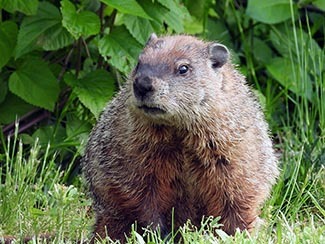
Better known as woodchucks or groundhogs, "whistle pigs" – so named for the loud alarm whistle they sometimes make – are a member of the squirrel family. While they prefer to spend their time foraging for greenery on the ground during the summer months, they can climb trees when they need to! You won't find woodchucks out during the winter months here in Michigan, as they'll be hibernating soundly in their underground dens until spring. Visit our website to learn more about woodchucks and other Michigan squirrels.
|
|